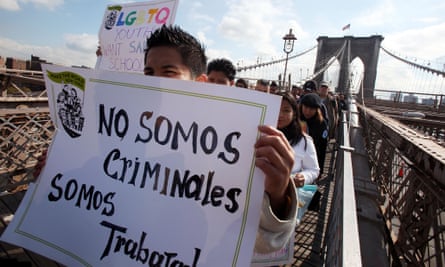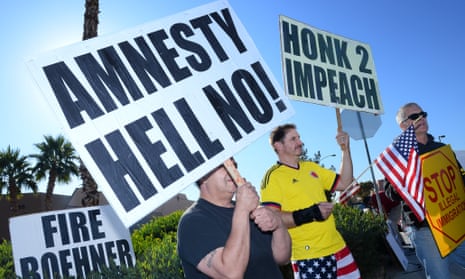Lupe is a 35-year-old mother of three who immigrated to New York in 2003 from the eastern Mexican state of Veracruz. On Monday, she says, “The system will acknowledge for the first time that I exist.”
The reason: New York City will unveil a new municipal ID program that could bring big changes for the city’s large undocumented population. Though all residents will be eligible to apply for the new ID, called IDNYC, undocumented New Yorkers are expected to benefit most.
There are an estimated 500,000 undocumented immigrants in New York City, an underserved and, at times, exploited population that lives in the shadows of the city’s gleaming skyscrapers.
In addition to a free one-year membership to the city’s leading cultural institutions, the IDNYC card will provide undocumented immigrants with the ability to access state buildings and open bank accounts with a number of participating financial institutions. Those participating banks and credit unions will also be announced as early as Monday, according to city officials.
An ID card could be life changing for Lupe. She and her husband, both undocumented, have lived in Brooklyn’s Bay Ridge neighborhood for more than a decade without the financial security of even a bank account.
Banks, which require an ID for proof of residency, have turned away Lupe’s Mexican passport as insufficient proof that she is a city resident. She says the isolation, in addition to the insecurity of living without an identity in a city that she and her family call home, has been trying.
For now, Lupe says the city’s ID will provide her an immediate lifeline: “The ID will list my home address for those who question my status as a resident in this city.”
“I’m basically invisible in this city without proper identification,” said Lupe, who refused to provide her surname due to her immigration status. “My husband and I work hard every day, we have children and the security that something as simple as an ID card will give us cannot be overstated.”
When he ran for office, Mayor Bill De Blasio promised an overhaul to the city’s immigration policies as part of his “Tale of Two Cities” campaign. The ID clearly represents a first step, says Betsy Plum, director of special projects at the New York Immigrant Coalition, a city-based advocacy group.
“Something as simple as a form of identification could be a quality-of-life improvement for these New Yorkers,” said Plum. “For example, if your employer unlawfully fires you and you want to contest it in court, you can’t even get into a public building without an ID. There are real tangible benefits here.”
One of those tangible benefits is legal protection from law enforcement in the case of an arrest, says Muzzaffar Chishti, an expert on US immigration policy who heads the office for the Migration Policy Institute, a Washington-based independent, non-partisan, nonprofit think tank, at New York University’s School of Law.
“If you’re arrested by police, police want to know who you are. The card makes it easier for the police to release you,” said Chishti.

Limits to a new form of freedom
However, for all the benefits that the city’s ID program will provide, there are limits to what it can do. The card will not grant city, state or federal benefits and, most importantly, will not be considered a work authorization permit, says Chishti.
While he credits the ID as a symbolic gesture by the mayor that he intends to see through reforms to city immigration policy, he says the challenge ultimately remains to bring this underground workforce into the formal economy.
One solution could be President Obama’s executive actions on immigration, announced last November, which would grant temporary legal status to as many as five million undocumented immigrants across the country. In New York City alone, 155,000 residents will be eligible, city officials confirmed to the Guardian.
As US residents for over a decade and parents to two children born in the country and a third that qualifies for permanent residency under the Dream Act, Lupe and her husband would be eligible for the government’s Deferred Action for Parents of Americans and Lawful Permanent Residents program, known as Dapa.
There are, however, both major legal and congressional obstacles to the reforms becoming law anytime soon. Governors in 24 states have sued Obama over his executive actions. If other states follow New York’s lead, it could give both Obama and undocumented immigrants a reprieve from the hostility directed towards them. It is, however, a long shot.

Comments (…)
Sign in or create your Guardian account to join the discussion